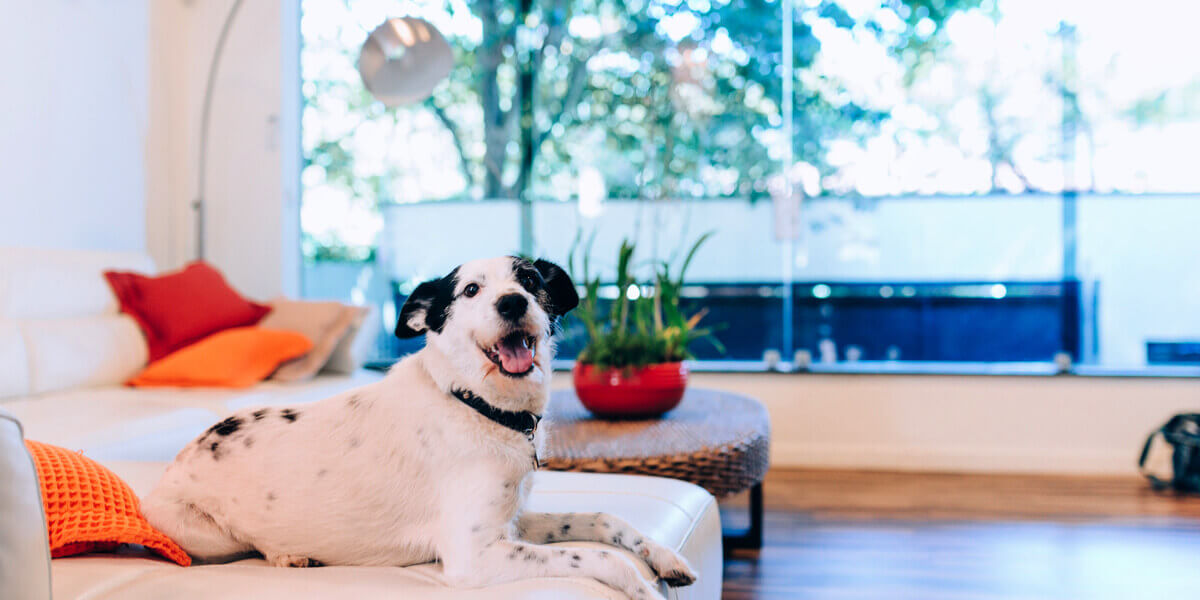Written by Melissa Rae Sanger
Growing up, my family and I shared our home with boxers we had adopted from the local animal shelter. Like most dogs, they wanted to be with their family all the time (and vice versa). But on warm summer days, while I was running through the sprinklers and riding my bike up and down the sidewalk, they had to stay indoors with the air conditioning blasting. As much as they would have loved to run around with me, we knew it was too dangerous: The heat could have killed them.
 © iStock.com/cokada
© iStock.com/cokadaNational Heat Awareness Day is the last Friday of May, but for dogs—particularly breathing-impaired breeds (BIB) like boxers, bulldogs, and pugs—the heat presents life-threatening challenges every day during the warmer months.
All dogs rely on panting to cool off, but BIBs, who struggle just to breathe because they have been bred for unnaturally flattened faces and distorted airways, are nearly twice as likely to suffer from heatstroke as other dogs.
Last year, countless dogs and other companion animals died from heat-related causes, but only 54 of those deaths made the news. Many of them were BIBs, including one who died in a greenhouse and another who died after a dog sitter allegedly left him unattended in her yard.
Even for dogs without breathing impairments, heat can kill quickly. Never leave a dog inside a parked car, even for brief periods. In the time it takes to pick up a few items at the grocery store or send a package, your car can become a dangerous inferno. On a 75-degree day, the temperature inside a parked car can soar to 104 degrees in 20 minutes, and up to 119 degrees on a 90-degree day! Think leaving the windows partially open will help? Think again. Studies show that this does nothing to make it safe inside the car-turned-oven.
Leave dogs at home when you run errands, and scan parking lots and listen for barking as you come and go. If you see an animal locked in a car, note the car’s make, model, color and license plate number. Ask the management of nearby businesses to page the car’s owner, and be persistent. If they refuse or the owner doesn’t promptly arrive, call animal control and/or 911. If the dog is in imminent danger, find a witness who will back up your account, and do whatever is necessary to save a life. Never leave until the dog is safe.
Heatstroke is a medical emergency, so it’s important to know the signs. If a dog appears restless, has a darkened tongue, is breathing rapidly, appears lethargic, is vomiting or is having a seizure, you must act quickly. Dogs experiencing heatstroke can sustain brain damage and die within just 15 minutes.
Exercise caution with physical activity in warm weather. Walk dogs in the early morning and late evening hours when it’s cooler outside, keep them indoors with fans and/or air conditioning running during peak temperatures and always have fresh water available. Dogs sweat mainly through their footpads, and any type of exertion can cause them to overheat quickly in the warm summer sun. Never take dogs running with you when temperatures are high—rather than leave your side, they will keep up until they collapse.
Hot pavement, asphalt and even natural trails reflect heat onto dogs’ bodies, raising their temperature even more, and can cause blisters and burns on their footpads in just one minute. Always test the surface before setting out by placing your hand on it for at least 10 seconds. If it’s too hot for your hand, it’s too hot for a dog’s feet. Pick routes with shady, grassy areas, and remember to take plenty of breaks and offer sips of clean, cool water.
Please also look out for dogs who are left chained or penned in backyards. Ensure that they have adequate potable water, shade and shelter, and encourage their owners to let them inside and treat them as family members. If you see an animal in distress, call 911 immediately.
If you take the proper precautions, summer can be smooth sailing for you and your dog. As for my parents’ current adopted dog, Finn, he’ll spend his mornings at the park, afternoons chilling inside and evenings hanging out on the porch with the family, listening to the bullfrogs.





